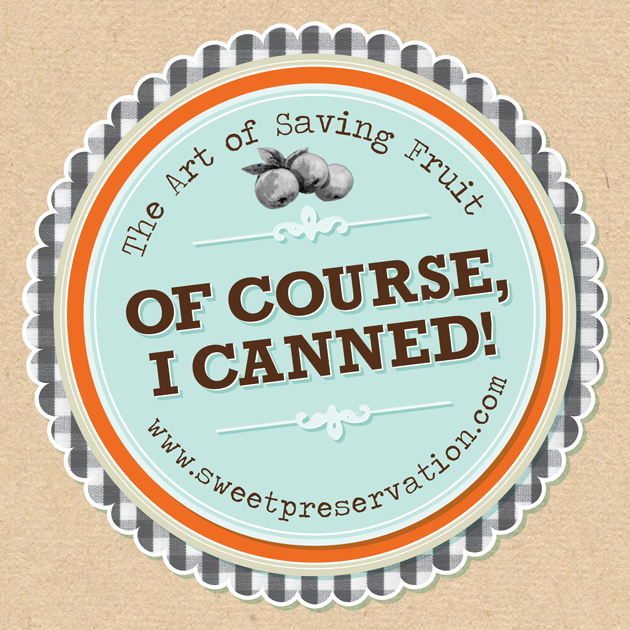Apricot~Pineapple Jam
 Friday, June 10, 2011 at 11:17PM
Friday, June 10, 2011 at 11:17PM Growing up this was my favorite jam, even though I'd only ever tasted the commercially-made kind.
A few years ago (at that point a seasoned jam-maker) I found myself with 2 extra pounds of fresh apricots and a fresh pineapple sitting next to each other on my counter. A light bulb went off in my head: what took me so long to put these two together myself? I went to work creating my very own Apricot~Pineapple Jam.
This recipe, while it appears simple, is a real winner. It's amazing to me that with a bit of skill and plenty of heat, 4 common ingredients can be turned into something so lusciously delicious.
Makes ~5 half pints
- 4 cups apricots, (mixture of ripe and barely-ripe fruit, pitted and chopped)
- 2 cups (about 1 pound) fresh pineapple, cut into chunks
- 1 fresh lemon, zested and juiced
- 3 cups white sugar
Note: Prepare canning jars before starting your preserving project.
1.) Combine chopped apricots, pineapple chunks and lemon zest plus lemon juice in a heavy-bottomed non-reactive saucepan.
2.) Bring to a boil over medium heat and cook for about 10 minutes, stirring occasionally to prevent the fruit from sticking to the bottom of the pan. Stir the fruit gently to reduce foaming. After about 10 minutes the fruit should be softening and you can periodically mash the chunks with a potato masher if you want smaller pieces.
3.) Add the sugar slowly, again stirring to prevent the mixture from sticking to the bottom of the pan. Boil for 10-15 more minutes, stirring, until the jam either thickens to your liking or until it reaches 220 degrees on a candy thermometer.
4.) Ladle jam into clean hot jars to within 1/4" of the top, and use a plastic knife to pop any bubbles that appear in the jam.
5.) Wipe rims spotlessly clean using a damp paper towl.
6.) Place a sealing lid on top of jar then screw a band onto the jar until it's "fingertip-tight".
7.) Process for 10 minutes in a Boiling Water Bath.
8.) Turn kettle off and let jars rest in kettle for 5 more minutes.
9.) Remove jars from kettle using jar-lifter tongs, and gently set aside to cool on the counter, on a kitchen towel, in a draft-free place.
10.) Let rest for 24 hours, then check for proper seal before storing.
> If jars lid seals it will easily keep for one year in a cool, dark place. If jar doesn't seal, place it in your refrigerator and eat within 3 months, and within one month after opening.
 Brook Hurst Stephens | Comments Off |
Brook Hurst Stephens | Comments Off | 








Reader Comments (2)
I purchased a case of pectin to make Apricot-Pineapple Jam. I could not find a recipe that looked like what I had in mind until I stumbled across your website. I am excited about your recipe and wondered if I can/should use pectin and what difference it might make. Any advice?
Hi Shelly,
I know you emailed me to (and I responded that same day with a response) but I thought I should copy & paste my emailed answer here for other people who might have the same question.
______________________________________________________________________________________________________________
Shelly,
I don't use pectin in this recipe because sometimes it just isn't necessary. Many fruits contain enough pectin on their own, especially fruits that aren't quite ripe. By adding lemon juice, it ups the pectin content plus adds a zingy punch of flavor. My Apricot~Pineapple Jam is fantastic and I've never used pectin to make it.
Why don't I use it (other than the reasons I noted above)?
Some commercial pectins require you to add a specific amount of sugar. Usually a lot of sugar. To avoid that, use Pomona Pectin, which is a wonderful product that allows you to use alternative sweeteners, in the amount you choose. (Like honey. Splenda, agave nectar, etc.)
Also, pectin adds to the cost of producing jam. I like to keep my jam-making projects as inexpensive as possible!
Does this info help?
Thanks for reaching out....and thanks so much for reading my blog.
Let me know how it turns out, okay?
Brook
PS You can save that pectin for making jellies (which can be made without pectin but it isn't as simple as when making jam) and jelly-type candies. Pectin does have it's place in preserving, but you don't need it for making jam :)